













The magazine of the art-form of the photo-essay
“A free, really high quality photo-essay magazine. Fabulous!”
Stephen Fry. British actor, writer and film & documentary maker

June 2014 back issue
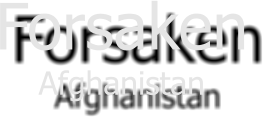
by Lana Slezic

“To beat a woman is to love a woman,” said my driver as we ambled through the dark streets of Kandahar. “Democracy
should not come too quickly to Afghanistan,” he added. It was 2005. I bit my lip and sat on my hands, afraid of what I
might do from the back seat of his pick-up truck. Though strong for my size I was not prepared to antagonise a hefty
Pashto man at 9 p.m. ten kilometers away from the guesthouse at which I was staying. It was the wrong time of day to
entertain the likes or dislikes of an Afghan seasoned by war. So, contrary to what every fibre of my being was telling me
to say and do, I kept my mouth shut and hands safely tucked away.
I don’t know why I was surprised by the words that slipped so easily from his lips. I knew that Kandahar and most of the
southern regions of Afghanistan were teeming with this kind of thinking. I suppose it was actually hearing it that made
me cringe like I’d been beaten beyond reparable damage. But it was my spirit he had made a rather large dent in. It
was the same spirit that had shared endless cups of tea with beautiful Afghan women all over the country. It was the
same spirit that was crushed when Malalai Kakar was assassinated in front of her home in September 2008. And it was
the same spirit that learned, rather painfully over the two year period during which I lived and worked in Afghanistan,
that no matter what I did or thought or photographed or wrote about, Afghanistan would unfold at its own speed in the
hands of its own people. Many would suffer in that process, especially women.
Forsaken documents my time in Afghanistan. I am grateful to the women I met and shared time with. They are forever
etched into my memories - some good, most not. They have made me a better human being. These photographs were
taken between March 2004 and February 2006.
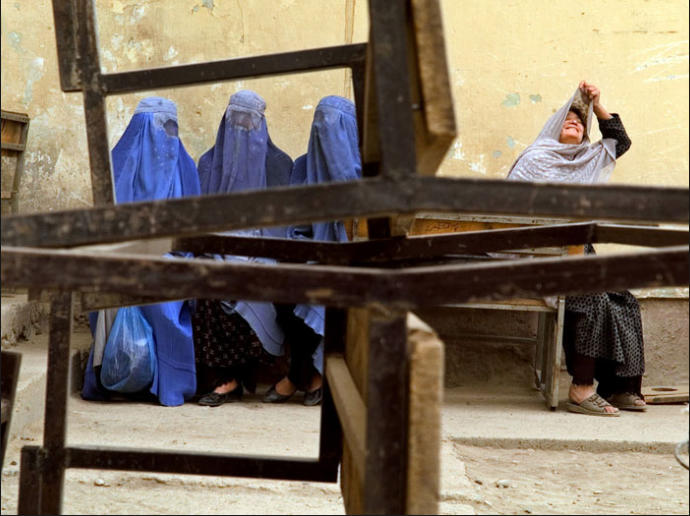
On the day of the first democratic elections in Afghanistan, women sit down to rest after voting at a polling station in
Kabul.
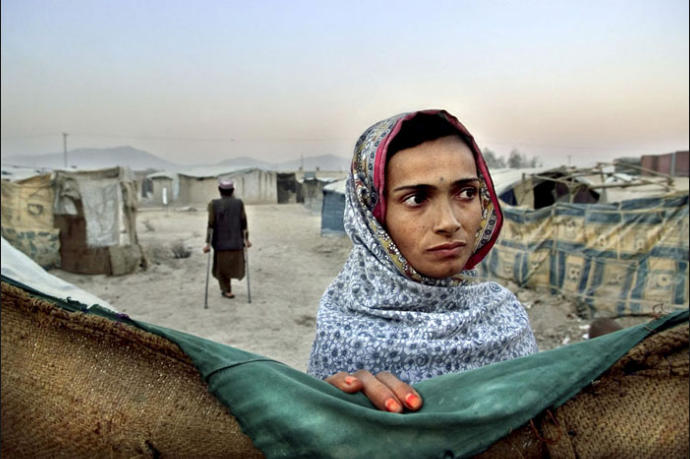
A woman at the Chaman Babrak refugee settlement in north Kabul. At the end of the Taliban regime, thousands of
returning refugees found rubble where their homes once stood.
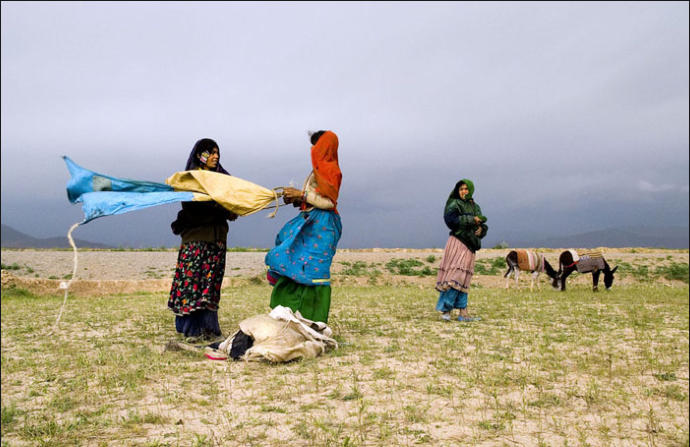
Women from the nomadic Kuchi tribe gather their belongings and prepare to steal wheat from a neighbouring farmer’s
field near Gardez, Afghanistan.
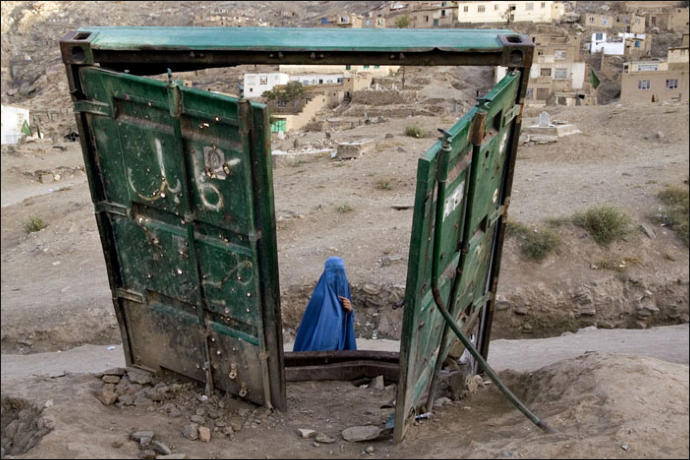
A woman walks by a set of container doors.The doors were likely once used as the entrance to a shop or stall until the
structure was destroyed during the conflict in Kabul.
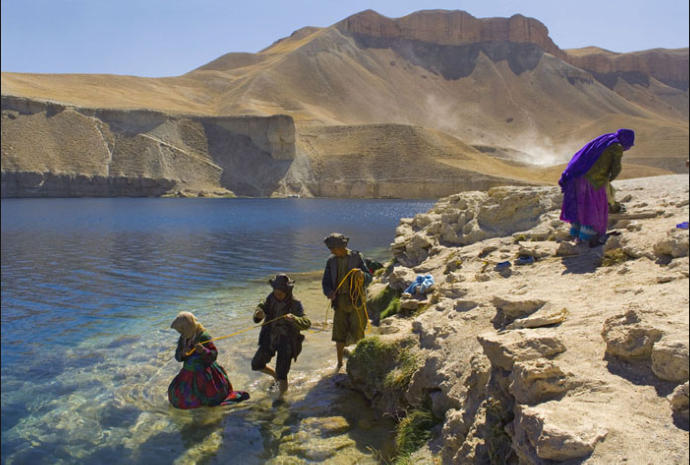
Afghans believe the water in Band-e-Amir lake in Bamiyan province has healing powers. When women cannot
conceive a child, particularly a male child, their husbands take them to the lake, tie a rope around their waste and
submerge them 3 times quickly.
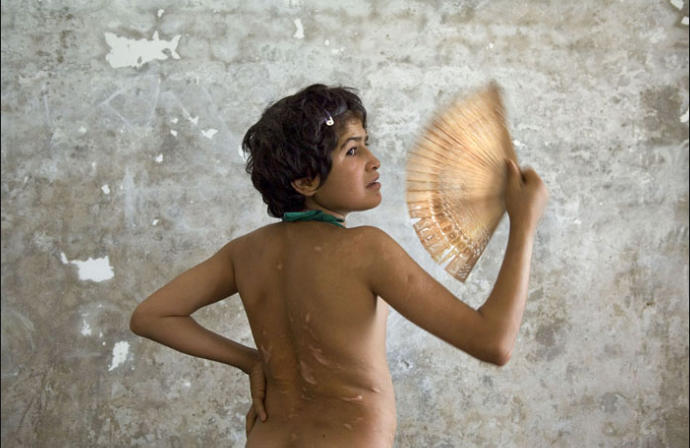
Gulsuma was 4 years old when her stepfather sold and married her to a six year old boy in Kandahar. She was
tortured, isolated and treated like a slave by his family for the next seven years until she escaped one night after her
father-in-law threatened to kill her. At 11 years old she was the only female in an orphanage in Kandahar.
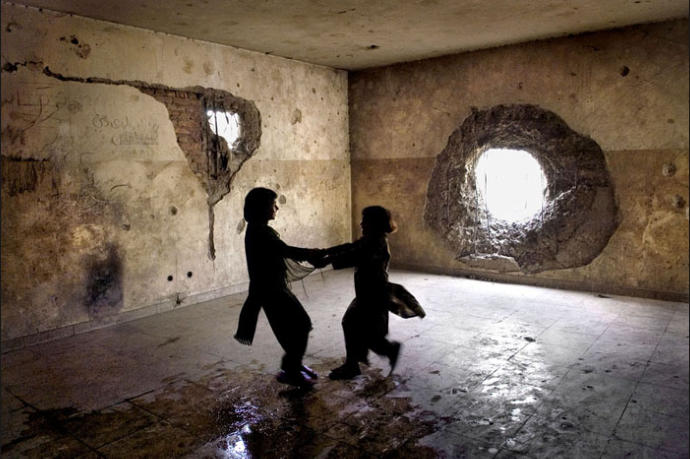
Destroyed buildings often serve as playgrounds. An abandoned Soviet housing project built before the Taliban regime
is home to 105 refugee families who returned from Pakistan.
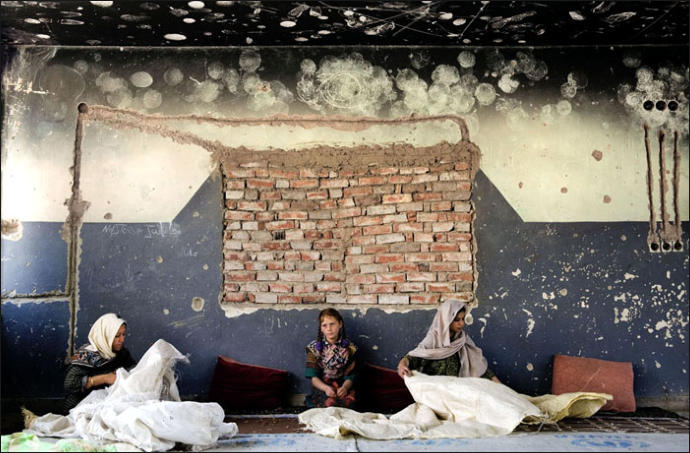
Refugee women sew canvas to create a shelter in an abandoned building in Kabul.
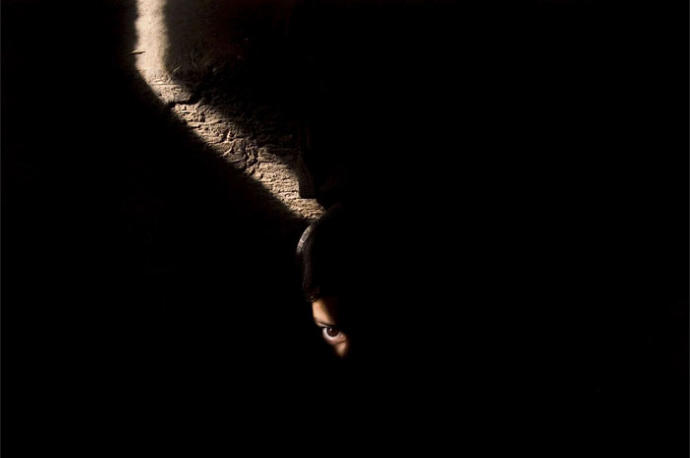
Light penetrates the darkness of a bakery where a young girl works in Charikar.
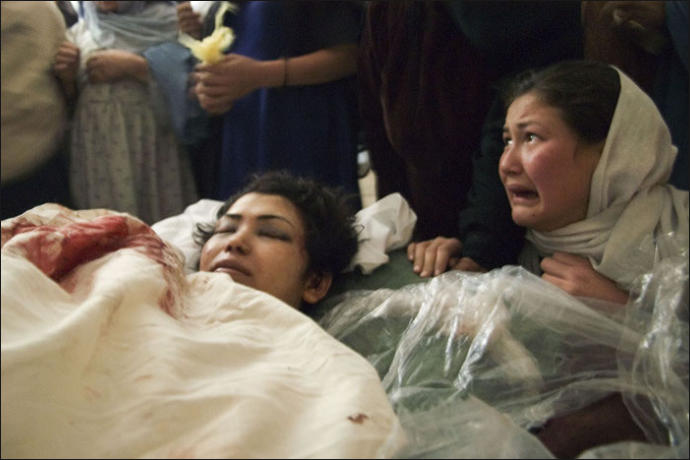
Shaima, a television host at a popular TV station in Kabul was shot dead in her home at the age of 24. Shaima was
not married, had no children and was considered liberally minded by her family. At the time of her death her brothers
were held on suspicion of murder. Honor killings are not uncommon in Afghanistan.
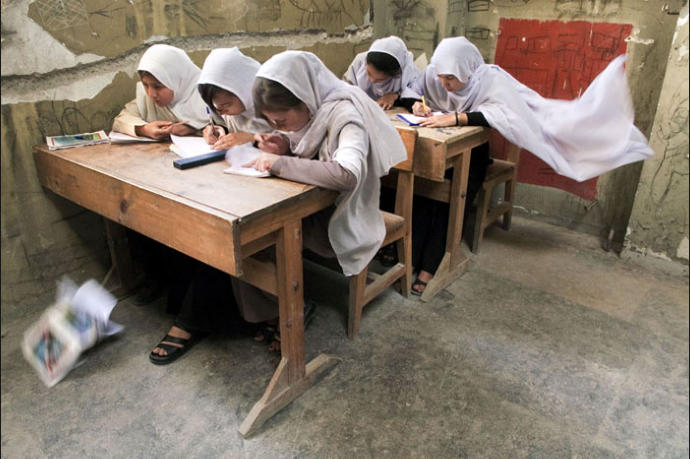
Wind blows through a temporary school for girls in the old Kabul theatre. The theatre was destroyed during the conflict
in Kabul.
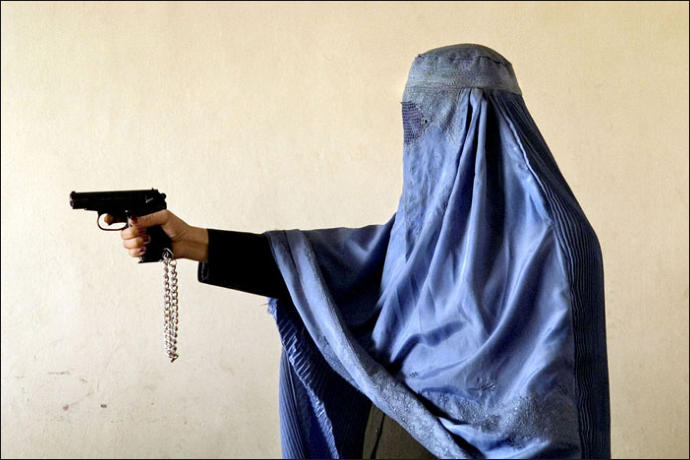
Malalai Kakar was the first woman police officer in Kandahar after the ousting of the Taliban. She was always armed
and wore a uniform beneath her burka. A mother of six, she was assassinated by the Taliban outside her home in
September 2008.
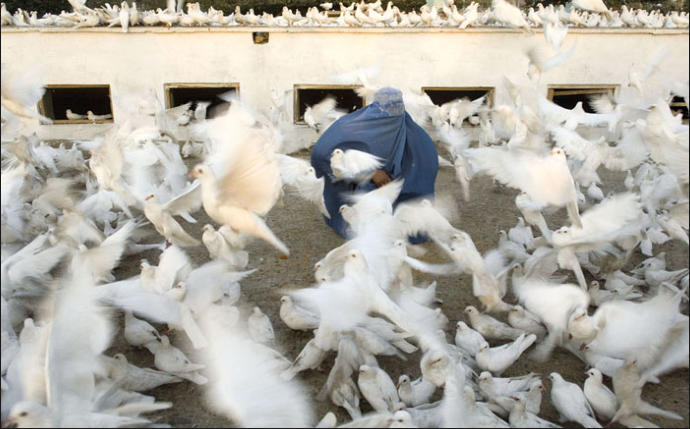
A woman feeds pigeons at the Blue Shrine in Mazar-e-Sharif. Afghans believe the the shrine’s pigeons are holy and so
they treat them with respect.
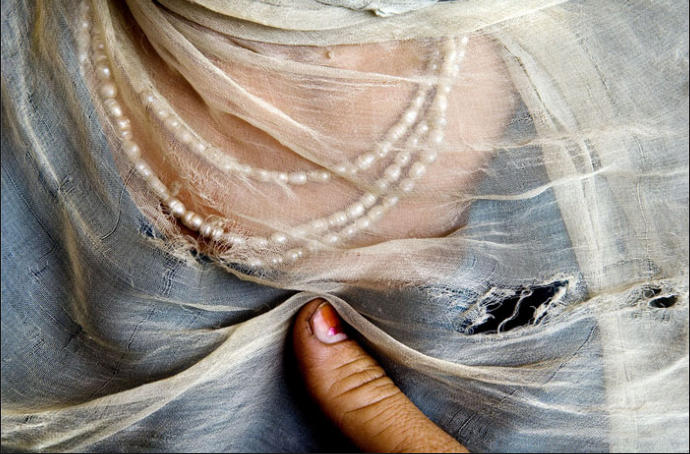
A prostitute in Kabul. Decades of war have left thousands of women widowed. Many have turned to prostitution as the
only means to support their children. If discovered these women would be killed to maintain the honour of their family
name.
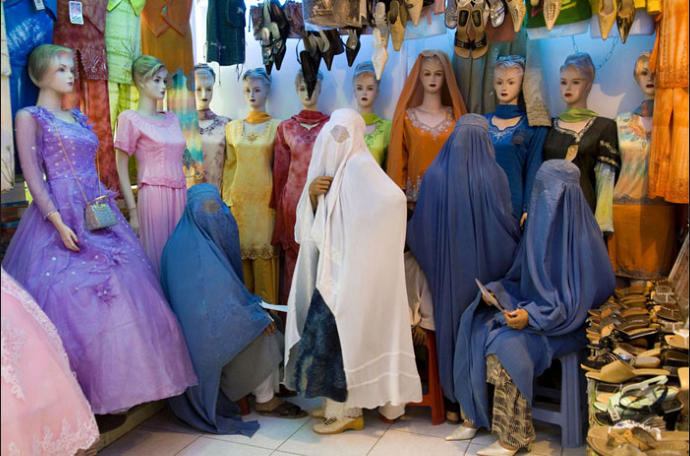
Women wear burkas for many different reasons. Some are forced to do so by their husbands and fathers to prevent
unfamiliar men from looking at or speaking to them in public. Others feel safe under the protective veil. Whatever the
reason, the burka does not prevent women from dressing up underneath. Here women shop for clothes at a shop in
Mazar-e-Sharif.












